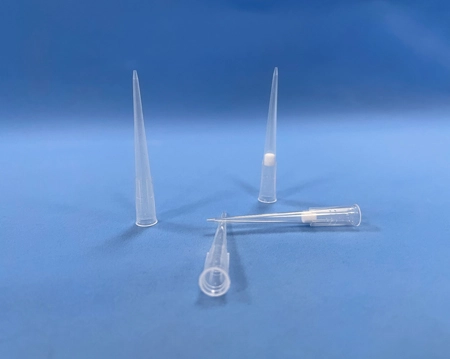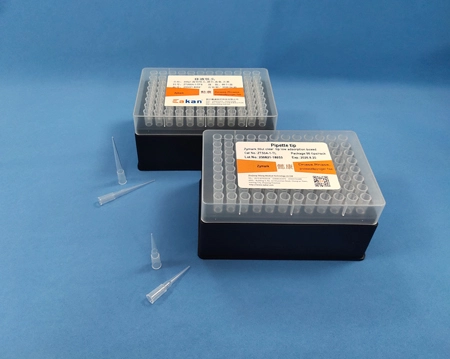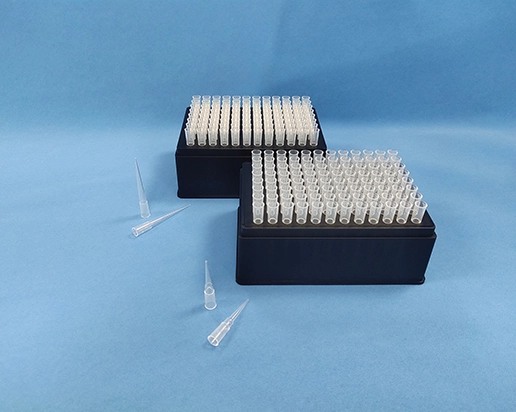What Are Filter Pipette Tips For?
In the world of laboratory pipetting, precision and accuracy are of utmost importance. Filter pipette tips are essential tools designed to address specific challenges in liquid handling. But what exactly are filter pipette tips used for? In this article, we will explore the diverse applications of filter pipette tips, their unique features, and how they contribute to contamination prevention and sample integrity. So, let's dive into the world of filter pipette tips and discover their significance in laboratory workflows!
Contamination Prevention and Sample Protection
One primary purpose of filter pipette tips is to prevent contamination and protect samples during liquid handling. These tips are equipped with built-in filters, typically made of hydrophobic materials, which act as barriers to prevent the passage of liquids, aerosols, microorganisms, and particulates. As liquid is aspirated or dispensed, the filter efficiently captures any potential contaminants, ensuring that only the desired sample is transferred.
Filter pipette tips are particularly valuable in applications where contamination can compromise experimental results, such as PCR, genomics, cell culture, and biochemistry. By incorporating a filter, these tips provide a protective shield against cross-contamination, ensuring the integrity and reliability of the samples being handled.
Protection Against Carryover and Cross-Contamination
Carryover and cross-contamination are common concerns in laboratory pipetting. Carryover occurs when traces of a previous sample are unintentionally transferred to subsequent samples, potentially leading to false results or compromised data. Cross-contamination, on the other hand, refers to the transfer of contaminants between different samples, which can distort experimental outcomes.
Disposable filter tips effectively mitigate the risk of carryover and cross-contamination. The filter acts as a physical barrier that traps any residual liquid, preventing it from entering the pipette shaft or being transferred to subsequent samples. By utilizing filter tips, researchers can confidently handle multiple samples in succession without worrying about the transfer of unwanted substances.
Additional Applications of Filter Tips:
1. PCR and Nucleic Acid Handling: PCR (Polymerase Chain Reaction) is a sensitive technique that amplifies DNA or RNA sequences. Contamination during PCR can lead to false-positive results or invalid experiments. Filter tips provide a crucial defense against contamination, ensuring accurate and reliable PCR outcomes. These tips are also valuable when working with nucleic acid extraction, purification, or sequencing, where sample integrity is vital.
2. Cell Culture and Microbiology: In cell culture and microbiology, maintaining sterility is essential. Filter pipette tips help prevent the introduction of contaminants into cell cultures, media, and microbial samples. By utilizing filter tips, researchers can reduce the risk of contamination, maintain cell viability, and ensure the accuracy of microbiological experiments.
3. Environmental Analysis and Forensic Applications: Filter pipette tips find utility in environmental analysis, water testing, and forensic applications. These tips help protect samples from external contaminants, ensuring accurate analysis and reliable results. In forensic laboratories, where trace evidence must be handled with extreme care, filter tips contribute to maintaining the integrity of crucial evidence.
Filter tips are critical consumables in laboratory, serving to prevent contamination and safeguard sample integrity. They find applications in various fields, including PCR, cell culture, microbiology, environmental analysis, and forensics. By incorporating built-in filters, these tips act as protective barriers, preventing the transfer of unwanted substances and ensuring accurate experimental results.
 English
English  中文
中文  日本語
日本語  한국어
한국어  français
français  Deutsch
Deutsch  Español
Español  italiano
italiano  русский
русский  português
português  العربية
العربية  tiếng việt
tiếng việt 


